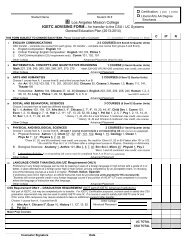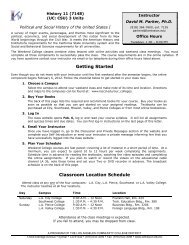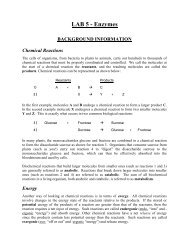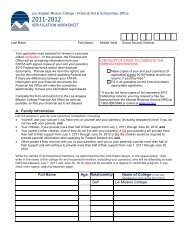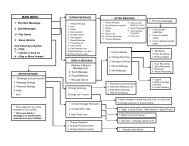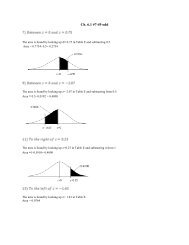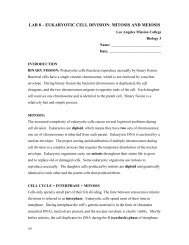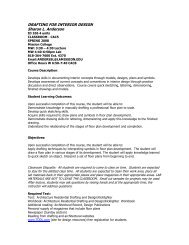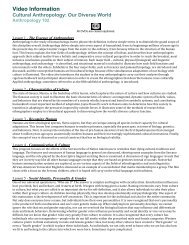Lab #3
Lab #3
Lab #3
You also want an ePaper? Increase the reach of your titles
YUMPU automatically turns print PDFs into web optimized ePapers that Google loves.
Part 4: THE STEREOSCOPIC DISSECTING MICROSCOPE<br />
Up until now you have been exclusively using a compound light microscope. While it is ideal for<br />
viewing tiny microbes that can be mounted on a slide, there are biological specimens that are<br />
too large and/or thick to be mounted on a slide and viewed with the compound microscope (yet<br />
too small for the naked eye). In this case you will want to use the stereoscopic dissecting<br />
microscope or “dissecting microscope” for short. Two advantages of this microscope are 1) you<br />
can manipulate your specimen (turn, flip, dissect) using your hands or tools while viewing it<br />
under magnification (hence term “dissecting”), and 2) by looking through both oculars you can<br />
see the image in three dimensions (“stereoscopic”).<br />
The dissecting microscope is a simple light microscope since the image you see is magnified<br />
through a single magnification lens. Your microscope has two such lenses that you can switch<br />
between, allowing you to view your specimen at 15X or 30X. While the total magnifications<br />
possible on this microscope are low, they provide the advantages of a very large field of view<br />
and a very thick depth of focus. This will allow you to see most, if not all, of your specimen<br />
clearly and in three dimensions.<br />
Your dissecting microscope contains a single focus knob and two different light sources<br />
controlled by knobs on either side of the arm of your microscope. Turn them on and you will<br />
notice that one light source is below the stage and the other is above the stage. The light below<br />
the stage produces light that will pass through a transparent specimen, what we call<br />
transmitted light. The light above the stage produces light that will bounce or reflect off the<br />
specimen. We refer to this as reflected light, which is used to illuminate a non-transparent<br />
specimen from above.



